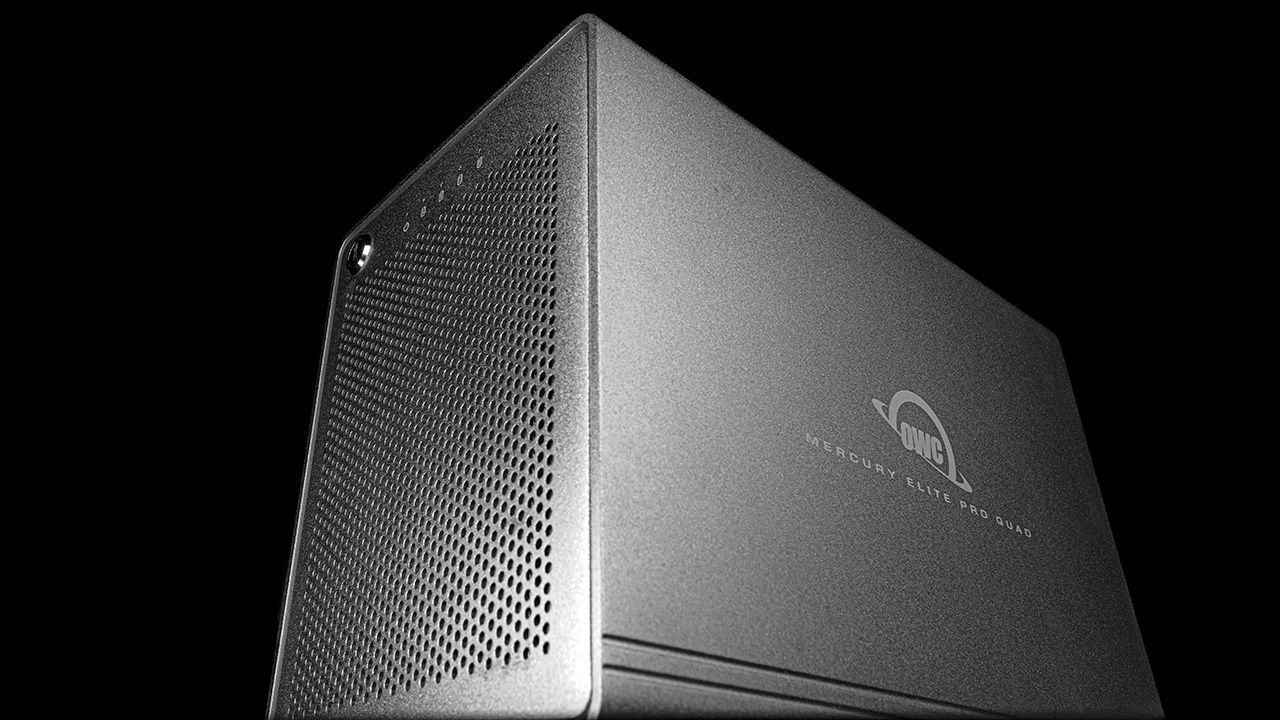Today we are taking a look at a quad bay drive by OWC known as the OWC Mercury Elite Pro Quad RAID. To us, this drive is not just another product but an opportunity to convey an important point that many users do not always consider about backing up their data.
Background
Since our review of the ASUSTOR AS4004T NAS back in 2019 we have been using that unit as our main storage pool for all of our data which at the moment accumulated to over 30TB.
In early 2022 Asustor NAS owners were hit by a DeadBolt ransomware attack. This affected our NAS as well and eventually, we didn’t end up losing any data and all of our files were secure due to some good work by the people from Asustor and our use of the built-in Snapshot feature which was immune to this specific ransomware attack.
Regardless of the fairly positive outcome from our perspective (our system was down for two weeks though, so this wasn’t exactly a fun experience), the one major takeaway we learned from all of this was that having a NAS or any single storage for your data, regardless of how many internal redundancies it has, is very dangerous.
Nothing is new about this of course, but when you have over 30TB of data on a NAS, your options for affordable, fast, and easy backup solutions are pretty scarce.
This is where we feel the OWC Mercury Elite Pro might offer a very good, simple-to-use option for on-site backup for high-capacity NAS units.
The OWC Mercury Elite Pro Quad RAID
Build and design
Let’s start with a look around the unit. The front has a grill with 5 LEDs for the unit operation and each drive as well as a lock. If you don’t care about locking the unit, we suggest storing the front grill or keeping the keys in the unit otherwise they might get lost and you can lose access to the drive (which almost happened to us).
The four drive trays are marked and can be easily inserted and locked. You will need to use a Philips screwdriver to connect the drives to the tray. We choose 4 Toshiba 16TB drives for this build.
On the back, there is a 90mm fan. It’s audible, but the drives are lauder with lots of seek noises, especially these high-capacity drives and this setup is definitely not something that we would leave on the table working 24/7 in a sound-sensitive environment.
Also on the back is a Kensington lock, on/off switch, and AC-in connector as well as a single USB-C 3.1 Gen 2 (10Gbit/s) connection.
OWC Mercury Elite Pro back of the unit
SoftRAID
The Elite Pro has no hardware RAID. Instead, OWC chose to use the software approach with SoftRAID which you can purchase on its own or get as a copy with one of the company’s drives (there is also a limited trial version for Windows or MACs).
The software is pretty simple to use and you can see the drives connected to the computer, their health as well as the RAID volumes, and can create RAID arrays. In our case, we created a RAID 5 but for some reason had to erase the drives first which took a really long time on our aging home office system.
After that, you can use the RAID just like any drive. We used the very useful Bvckup 2 backup software to backup our NAS to the OWC drive using our computer. Backing up about 30TB took several days (again our home computer needs an urgent update) which brings us to the topic of performance.
Simple interface – SoftRAID
Performance
We tested the unit with 4 16TB Toshiba drives in RAID 5 performing back-and-forth real-world large folder transfer tests.
Read speed was fairly good ranging from 350-500MB/s on average depending on the specific computer we used.
Write speed was not as good with speeds averaging typically below 100MB/s which is definitely on the low side and you can see this in our CrystalDiskMark test. We are not sure if this is a local problem on the two PCs that we used or something else (we will update if we get any more info from OWC).
We are currently talking to OWC to try and get to the bottom of this issue and will update our article when we have answers.
Conclusion
Backup is crucial. Any NAS used for storage of critical data should be backed up like any other storage. Using a unit such as the OWC Mercury Elite Pro Quad RAID can be the difference between having your data safe and losing everything as we almost found out ourselves.
When it comes to good backup practices in general the recommendation is always to keep a copy on site and a separate copy off-site. The problems start when dealing with tens of TB of data the cloud is not always a viable option due to cost, slow upload speeds, and other issues.
How do you deal with large-capacity backup? Let us know in the comments.
How do you back your data?
Pricing
The OWC Mercury Elite Pro Quad RAID starts at $320 with no drives and you can order it with up to 72TB of storage.
You can check out more LensVid exclusive articles and reviews on the following link.

You can support LensVid by shopping with our affiliate partners
Affiliates: Amazon, B&H, Adorama and E-bay.
Why should you trust us?


